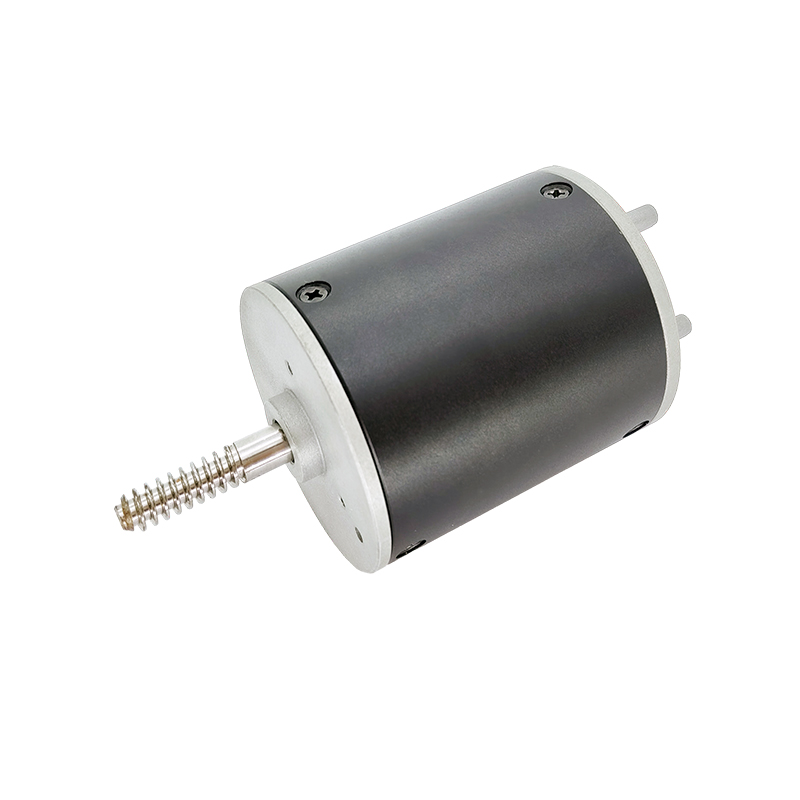What Makes Brushless Motors a Game Changer in Modern Technology?
2024-12-18
In the ever-evolving world of technology, innovation plays a key role in improving the efficiency, longevity, and performance of various devices and systems. One such innovation that has had a significant impact across industries is the brushless motor. But what exactly makes brushless motors so special, and how are they revolutionizing industries like robotics, electric vehicles, drones, and more?
In this blog, we'll explore the key features and benefits of brushless motors, their applications, and why they have become a game changer in modern technology.
What Are Brushless Motors?
As the name suggests, a brushless motor is a type of electric motor that doesn't use brushes for commutation, unlike traditional brushed motors. In brushed motors, carbon brushes make contact with the rotor (the moving part of the motor) to transfer electrical current, allowing the motor to rotate. However, these brushes wear out over time, resulting in friction, heat generation, and maintenance requirements.
In contrast, brushless motors rely on an electronic controller to switch the current in the motor windings, which eliminates the need for brushes. Instead of mechanical contacts, brushless motors use permanent magnets and electromagnetic fields to create motion, resulting in smoother operation and better overall performance.
How Do Brushless Motors Work?
Brushless motors consist of two main components: the stator (the stationary part) and the rotor (the rotating part). The stator contains windings of wire that are powered by a controller, while the rotor has permanent magnets that interact with the electromagnetic fields created by the stator.
Here’s a simplified breakdown of how a brushless motor works:
1. Power Supply: The controller sends electricity to the stator windings, creating a rotating magnetic field.
2. Magnetic Interaction: The rotating magnetic field interacts with the permanent magnets on the rotor, causing it to spin.
3. Commutation: Instead of relying on physical brushes to reverse the current direction, the controller switches the direction of the current electronically, ensuring continuous rotation.
4. Rotation: As the magnetic fields keep shifting, the rotor continues to turn, converting electrical energy into mechanical energy.
Why Are Brushless Motors a Game Changer?
1. Higher Efficiency and Performance
One of the biggest advantages of brushless motors is their efficiency. Traditional brushed motors lose energy due to friction from the brushes, but brushless motors eliminate this problem. This leads to better power conversion, meaning brushless motors can achieve higher torque and speed with less energy consumption. As a result, they deliver more power for the same amount of electrical input, making them ideal for applications that require high performance.
For example, in electric vehicles (EVs), the efficiency of brushless motors translates to longer driving ranges and less energy waste, which is essential for extending battery life.
2. Reduced Maintenance and Longer Lifespan
Since brushless motors don’t have brushes that wear out over time, they require significantly less maintenance compared to brushed motors. In brushed motors, the brushes degrade, causing friction, sparking, and eventually leading to motor failure. However, with brushless motors, the lack of physical contact between components means less wear and tear, resulting in extended motor lifespan and reduced downtime for repairs.
This is particularly important in industries where equipment needs to operate continuously without interruptions, such as in drones, robotics, and industrial machinery.
3. Smoother Operation and Less Noise
Brushless motors operate more smoothly than their brushed counterparts. The absence of brushes means there is less friction, which leads to smoother rotation and quieter operation. In applications where noise levels are a concern, such as in home appliances, electric vehicles, and drones, brushless motors offer a clear advantage.
Moreover, the absence of brush-induced electrical noise means that brushless motors are less likely to cause interference with sensitive electronics, making them ideal for use in precision instruments and high-tech devices.
4. Compact and Lightweight
Another significant advantage of brushless motors is their compact size and lightweight design. Without the need for bulky brushes and commutators, these motors can be made more compact, which is ideal for applications where space is limited or weight is a critical factor. For instance, in drone technology, brushless motors are often preferred due to their high power-to-weight ratio, allowing drones to fly longer distances with minimal weight.
5. Greater Control and Precision
Brushless motors offer precise speed and torque control, which is essential in applications requiring fine adjustments and high precision. The electronic controller used in brushless motors allows for more accurate adjustments to speed, direction, and torque, enabling smoother and more reliable performance.
This level of control is especially beneficial in robotics and medical devices, where precise movements are crucial for functionality.
Key Applications of Brushless Motors
Brushless motors have become the standard in many modern technological applications. Let’s take a look at some of the most common industries and devices that rely on brushless motors:
1. Electric Vehicles (EVs)
The automotive industry, especially the electric vehicle sector, has embraced brushless motors due to their high efficiency, durability, and performance. In EVs, brushless motors are used to drive the wheels, providing smooth acceleration and better energy efficiency. The long lifespan and low maintenance of brushless motors also contribute to the overall reliability of electric vehicles.
2. Drones
Drones are another area where brushless motors have had a transformative impact. The lightweight and high-efficiency nature of brushless motors allows drones to fly longer, with greater stability and less vibration. Additionally, the precise control of brushless motors enables drones to maintain steady flight even in challenging conditions, making them indispensable in industries like aerial photography, surveillance, and agriculture.
3. Robotics
In robotics, brushless motors are crucial for providing precise and reliable movement in a variety of robotic systems. Whether it's a robotic arm in a manufacturing plant or a service robot in healthcare, brushless motors deliver the high torque and smooth operation needed for complex tasks. Their durability ensures that robots can function effectively in demanding environments with minimal downtime.
4. Power Tools and Appliances
Brushless motors are increasingly used in power tools, such as drills, saws, and screwdrivers, because of their high efficiency and long lifespan. Similarly, in home appliances like vacuum cleaners and washing machines, brushless motors contribute to quieter, more reliable performance.
5. Medical Devices
In medical devices such as ventilators, infusion pumps, and diagnostic equipment, brushless motors provide the reliability and precision required for critical tasks. Their ability to operate silently and smoothly is especially important in environments where accuracy and noise reduction are essential.
Conclusion: Are Brushless Motors the Future of Technology?
Brushless motors have undoubtedly changed the landscape of modern technology. Their combination of efficiency, longevity, precision, and quiet operation makes them the ideal choice for a wide range of applications, from electric vehicles and drones to power tools and medical devices. As technology continues to advance, the role of brushless motors will likely expand even further, especially in industries focused on sustainability, efficiency, and precision.



